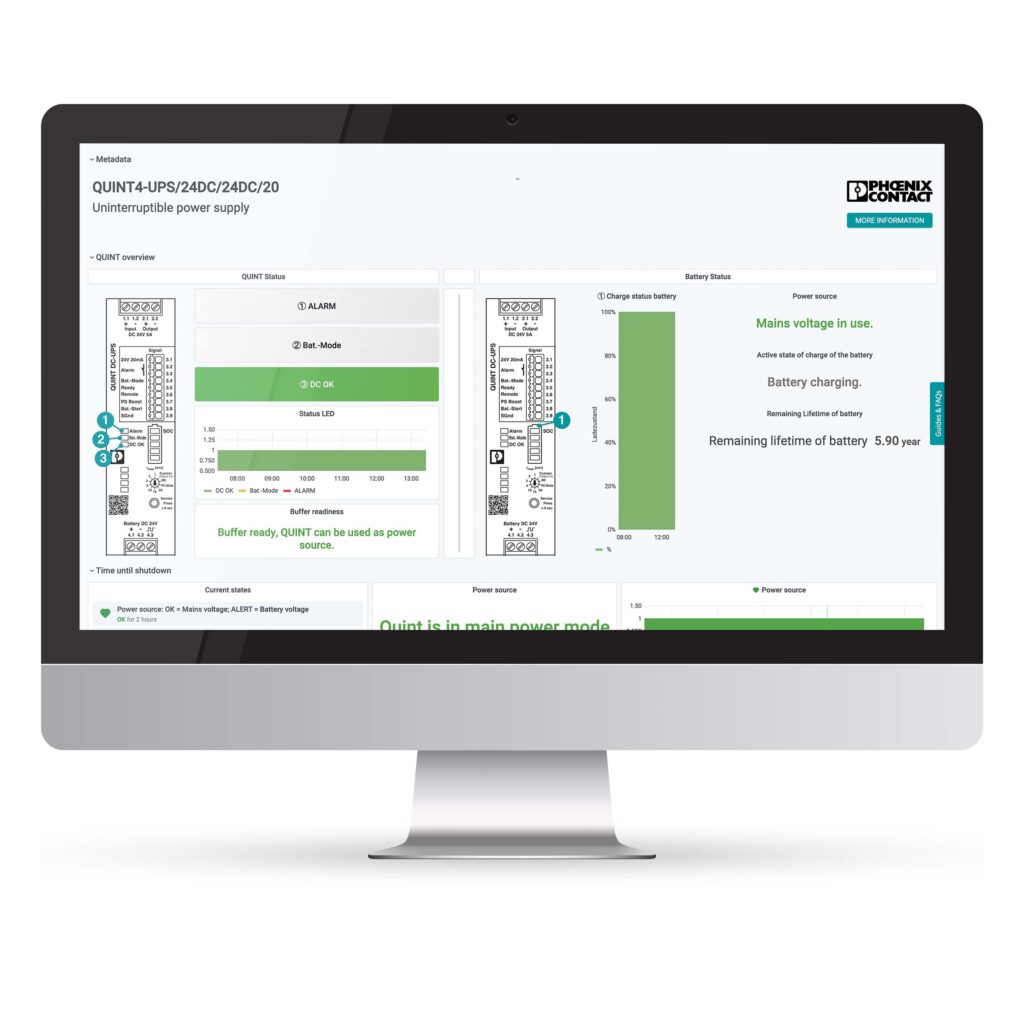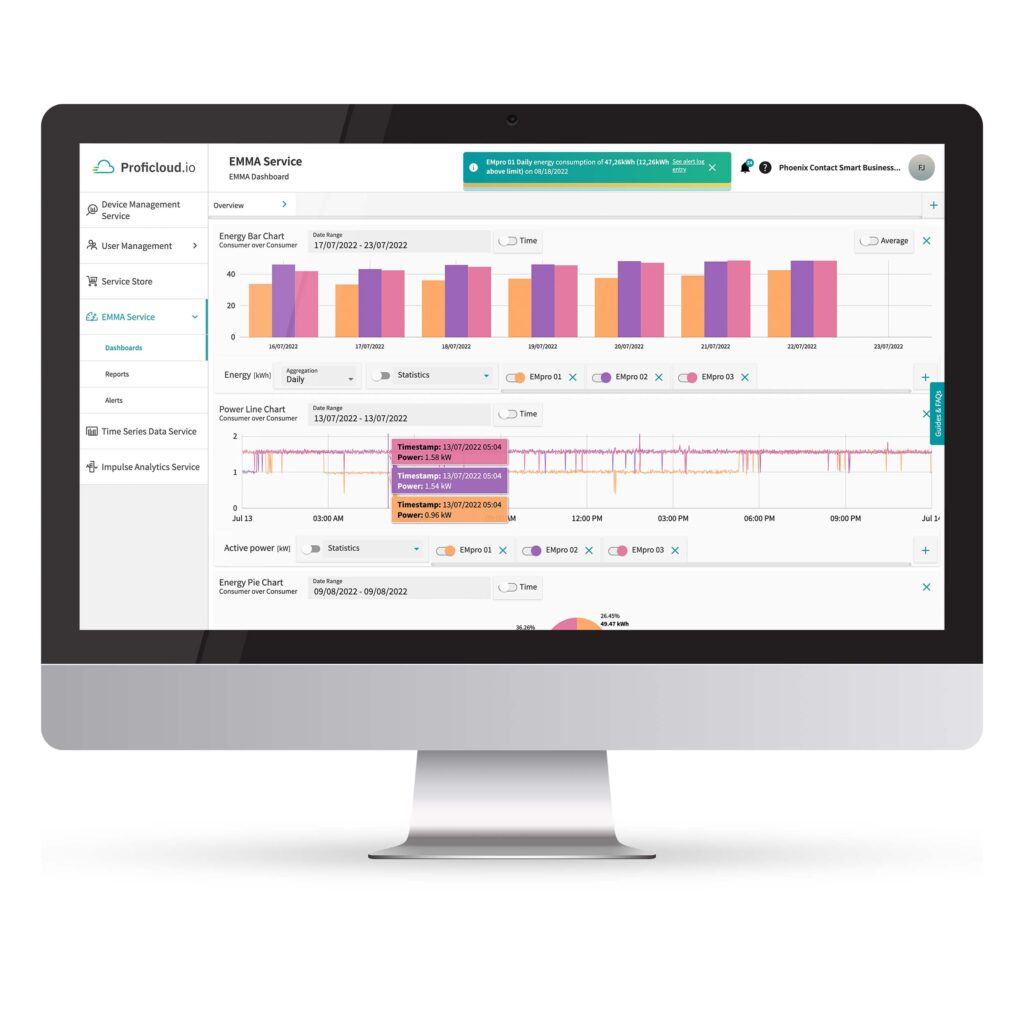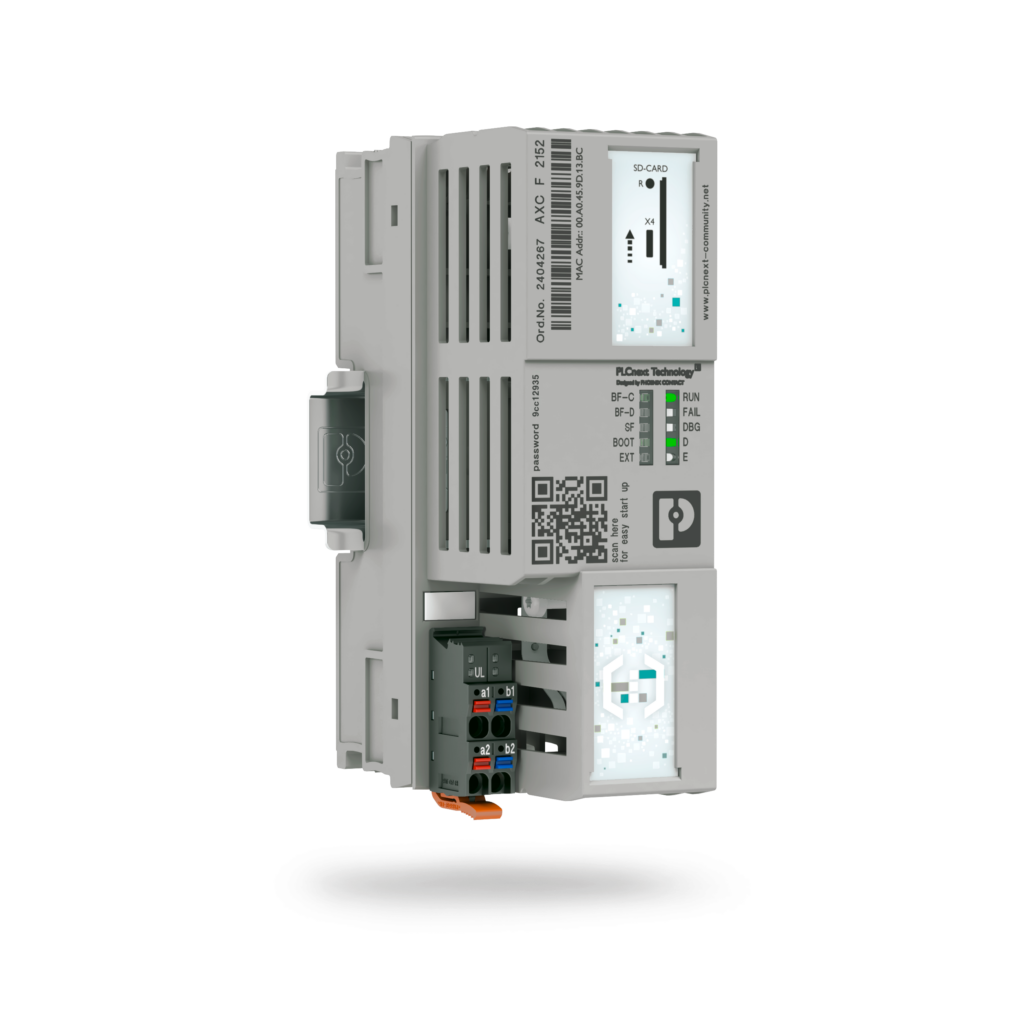
Energy production monitoring in the mountains of Austria
Creating a modern, energy self-sufficient facility using a combination of hydropower, photovoltaic systems and advanced digital monitoring for optimal energy management.
- Integration of a modern micro-hydropower plant and a photovoltaic system
- Intelligent load management for optimal use of energy sources
- Near real-time monitoring and visualization of energy flows
Ready to explore what’s possible? Let’s find the right solution, together.
Energizing the Sarotla Hut with hydropower and solar
Creating a sustainable and efficient storage solution
The Sarotla Hut, located at an altitude of 1,611 meters in Brandnertal, was originally built in 1902 by the Austrian Alpine Club but was destroyed by an avalanche in 1999 and rebuilt in 2000. Due to its remote location, the hut must be supplied with energy on-site. On the occasion of Phoenix Contact’s 100th anniversary, the anniversary team supported the modernization of the Sarotla Hut in Vorarlberg. This project is part of a series of sustainability initiatives that the company is implementing worldwide to promote the vision of an “All Electric Society“.
Ambitious goals and unique challenges
The main goal of the project was to make the Sarotla Hut energy self-sufficient and sustainable. This included developing a new energy concept by the Vorarlberg University of Applied Sciences in collaboration with the Austrian Alpine Club. A concept for an improved and sustainable energy supply was designed, which included a small hydropower plant and a photovoltaic system. One of the biggest challenges was to link the energy sources in such a way that the limited energy is used optimally and not wasted. Continuous monitoring of the energy systems is crucial to ensure efficient operation and to quickly identify and address any issues, thereby maintaining a stable and reliable energy supply.
A model for sustainable energy supply
The successful modernization of the Sarotla Hut impressively demonstrates how modern technology can achieve sustainable and self-sufficient energy supply. This project serves as an inspiring example for other mountain huts and similar projects aiming for sustainable energy solutions. Phoenix Contact has not only contributed to sustainability with this project but also shown how technological innovations can contribute to CO2 reduction without sacrificing comfort or functionality.
Key benefits and advantages of the project
One of the key benefits of this project is the transparent representation of energy data, which allows for continuous monitoring and forecasting of energy flows. This capability is particularly important to sensibly reduce energy consumption during periods of low solar irradiation and ensure a stable energy supply. Additionally, the technical facilities can be used during winter to monitor the hut and perform remote diagnostics, which is crucial for reliable and safe operation in this remote location.
Technical hardware setup

Innovative technical solutions for energy independence
As part of the modernization, a newly designed micro-hydropower plant was installed, increasing the output from 0.7 kW to 5 kW. In addition, a photovoltaic system with an output of 11.5 kWp and a battery storage system with a capacity of 58 kWh were installed. The intelligent load management from Phoenix Contact played a crucial role in optimizing the use of energy sources. It allows for efficient distribution of electrical power during shortages and utilization of energy surpluses.
Smart automation and data monitoring
The PLCnext Technology automation solution with the PLCnext Controler (AXC F 2152) and intelligent elements optimizes energy flows in the hut. Various energy meters as well as current and voltage transformers record the energy data and send it in near real-time to Proficloud.io’s Smart Services. This data is graphically processed to provide a detailed overview of energy flows and distributions. In the hut, a 7-inch and a 21.5-inch WP6000 web panel are used to display the information. For remote maintenance, a VL3 series panel PC is available, installed in the control cabinet door. A secure connection from the valley to the hut can be established via the FL mGuard remote maintenance router.

Maximize value with Smart Services
The Smart Services of Proficloud.io added the needed digitalization component of the project.
Through Device Management Services, components are registered and state-of-health monitored. With Time Series Data Service, dashboards are created and displayed on the hut’s screens. These dashboards provide important information about the hut, energy production through hydropower and solar energy, battery status and energy consumption. Visitors to the hut can view this information, which is not only informative but also raises awareness about sustainable energy supply.
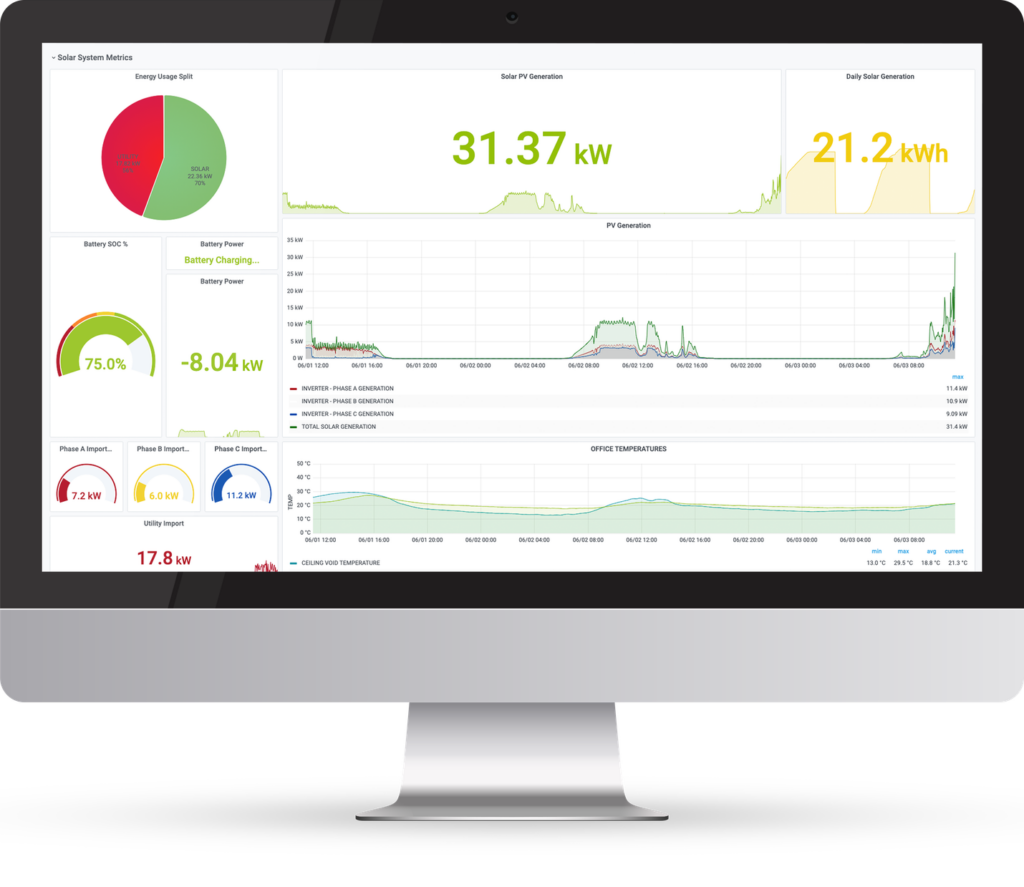
Time Series Data Service
The Time Series Data Service is a Smart Service that offers comprehensive monitoring, management and analysis of process data – from everywhere, anytime. It provides features that help understand data, enabling optimizations that can enhance operational efficiency and performance, leading to significant cost savings and improved productivity. These enhancements directly contribute to a greener footprint.
View into the dashboards of the project
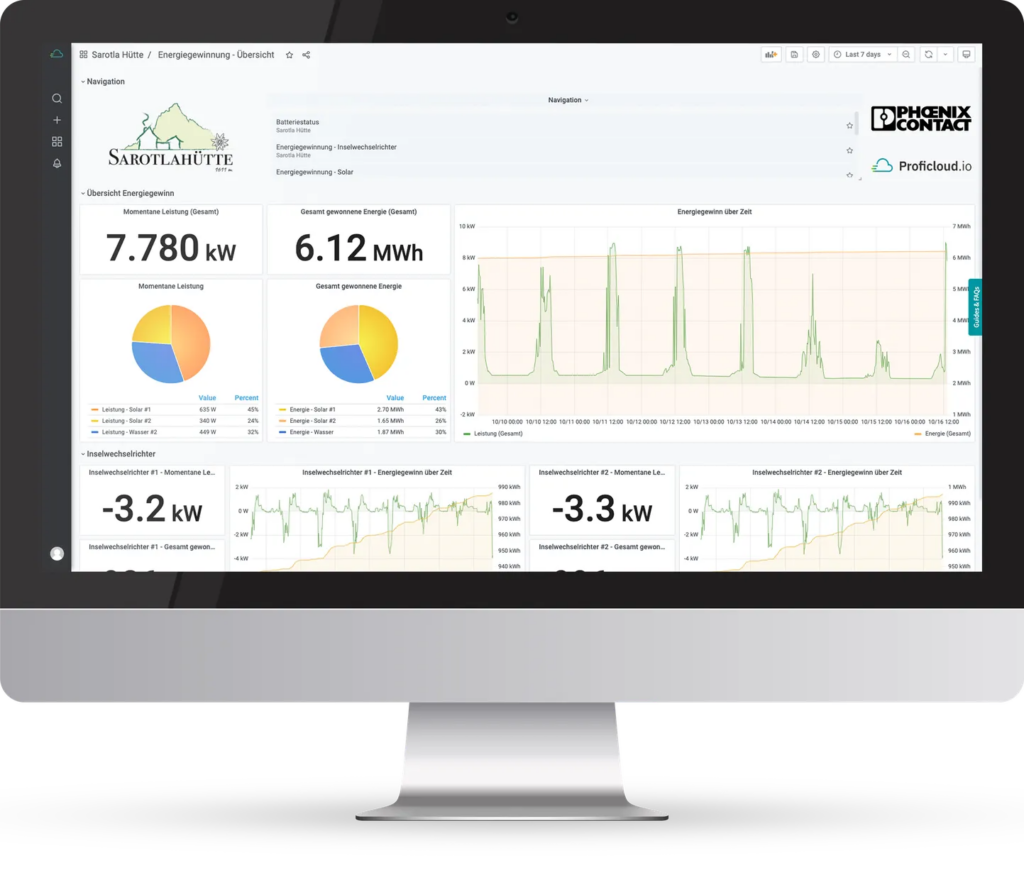
Click to expand image
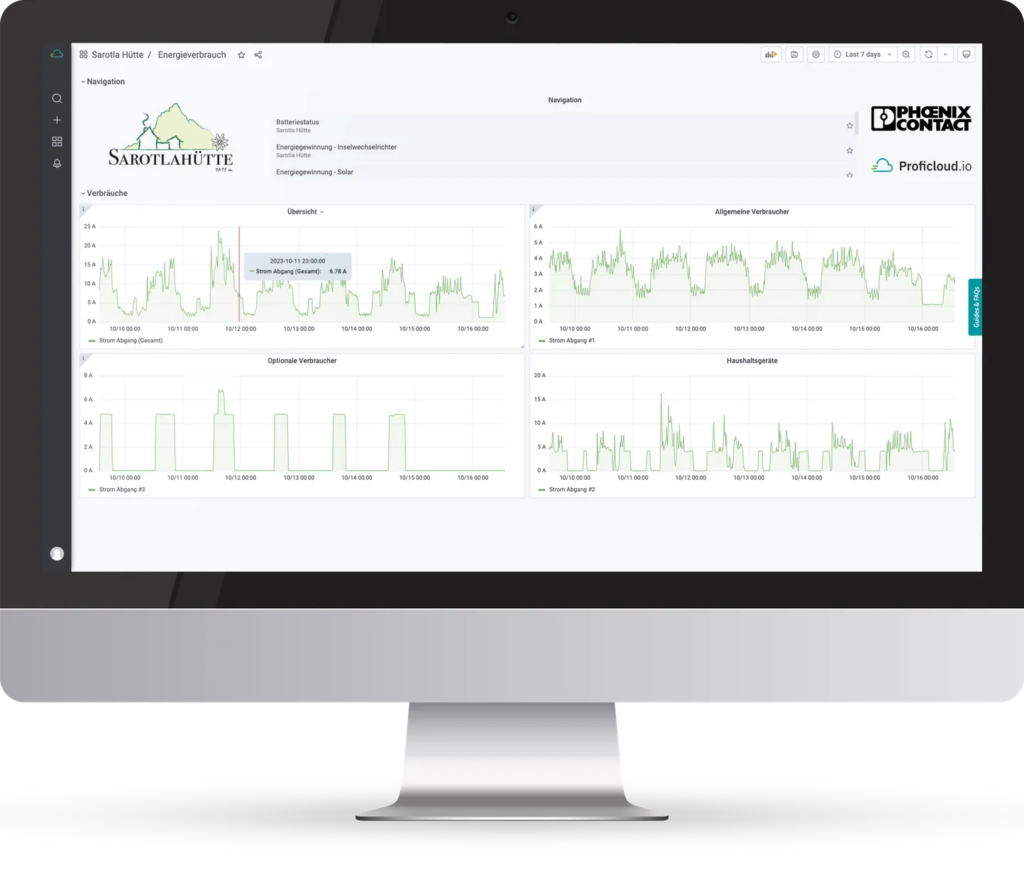
Click to expand image
Further information

Hi, my name is Florian Jacob and I am glad to help you out!
Please do not hesitate to contact me. Also, if you have any suggestions or comments, just send us a message to inbox[at]phoenixcontact-sb.io and we will answer as soon as possible.





